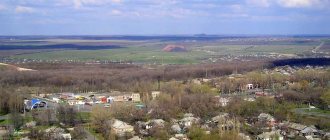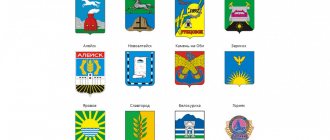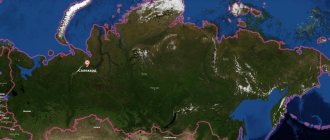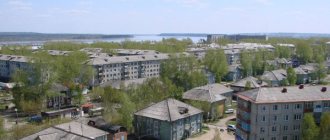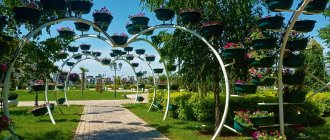A city in the Primorsky Territory, the third largest, after Vladivostok and Ussuriysk. The total area of the urban district is 326 square kilometers. Population – about 150 thousand inhabitants.
The discovery appeared on the map of Russia relatively recently. The year of foundation is recognized as 1864. City status was awarded 86 years later during Soviet times. Until the 30s, the name Nakhodka applied only to the bay. The settlement was called American. Obtaining city status in 1950 gave impetus to the development of Nakhodka. In addition to the expansion of the port, the first avenue appeared in the city, a nautical school was opened, and a ship repair plant was founded.
Attempts to create a free economic zone on the territory of the Nakhodka urban district were unsuccessful at the turn of the 20th and 21st centuries.
What holiday is it today?
09 February 2022, Wednesday
Today are holidays and events: Aeroflot's birthday International Dentist Day Memorable date in Russian military history: The feat of the cruiser Varyag Tomorrow: Diplomat's Day
Today is an Orthodox holiday: Transfer of the relics of St. John Chrysostom, Archbishop of Constantinople... Tomorrow: St. Ephraim the Syrian. Venerable Ephraim of Novotorzhsky. Venerable Ephraim of Pechersk, Bishop of Pereyaslavl. Venerable Theodosius of Totem, the head and founder of the Spasosumorin monastery...
Today is a national holiday: Chrysostom's Fire... Tomorrow: Ephraim's Day...
Seasons
Seasons, four periods of the year (spring, summer, autumn and winter) characterized by certain average temperatures. The period during which the Sun passes through one of these sectors is called the season. Spring in the Northern Hemisphere and autumn in the Southern Hemisphere begin when the Sun passes through the initial circle of declination and its right ascension is 0° (vernal equinox). Summer in the Northern Hemisphere and winter in the Southern Hemisphere occur when the sun's right ascension is 90° (summer solstice). Autumn in the Northern Hemisphere and spring in the Southern Hemisphere begin when the sun's right ascension is 180° (autumnal equinox). The beginning of winter in the Northern Hemisphere and summer in the Southern Hemisphere is considered to be the winter solstice, when the direct ascension of the Sun is 270°... Next: Seasons. Russian folk calendar. Monthly words...
Interesting Facts
* The city of Nakhodka is the southernmost city in the Far East - 250 km south of the city of Krasnodar
* In these places, sites of ancient people (Stone Age) were found.
* The city and the bay on which it is located bear the same name – “Nakhodka”.
* In Nakhodka, many houses from the Stalin era remain intact.
* At the end of World War II, there were many camps for Japanese prisoners of war around Nakhodka.
* More than 20 million tons of cargo are transshipped through the port of Nakhodka every year.
Folk calendar about every day
Every day one season always replaces another and this determines a person’s way of life. In connection with this, a folk calendar was formed in which there were practically no nameless, unmarked days. Every day was special, had its own purpose. All this was determined by climate conditions and astrological phenomena.
A calendar is a system for counting periods of time. The first calendars arose a long time ago, in ancient times, because there was a need to measure time. The word calendar comes from the Latin words caleo - to proclaim and calendarium - debt book. This is due to the fact that in Ancient Rome the beginning of each month was especially proclaimed, and because it was customary to pay debts on the first day of the month. Different peoples counted time differently. Some calendars are based on the changing phases of the moon - lunar calendars; in others - the change of seasons - sunny; in others, the length of the year was coordinated with the change of seasons, and the counting of months was associated with the phases of the Moon. Such calendars are called lunisolar.
In Rus', the calendar was called a monthly calendar. Every day, the month book covered the entire year of peasant life, “describing” day by day, month after month, where each day had its own holidays or weekdays, customs and superstitions, traditions and rituals, natural signs and phenomena. The cyclical nature of the calendar is reminiscent of human life, where spring is youth, summer is heyday, autumn is the time of harvesting fruits (it’s good if there are some, otherwise you can live your life without collecting fruits), winter is the time of wisdom and peace. This cyclicality and rhythm determined the way of life of the farmer. The folk calendar was an agricultural calendar, which was reflected in the names of the months, folk signs, rituals and customs. Even the determination of the timing and duration of the seasons is associated with real climatic conditions. Hence the discrepancy between the names of the months in different areas... Next: Folk calendar...
Stella for the 35th anniversary of Nakhodka
In 1985, at the entrance to the city on the western side, a stele was erected to commemorate the 35th anniversary of the city. In the central part of the composition is an image of a woman holding a dove, a symbol of peace, in her hands. On both sides there are bas-reliefs showing fishermen, sailors, shipbuilders and workers in other professions typical of the city. Various scenes from the history of the city are reflected.
Fishing calendar for every day
The fishing calendar should not be taken as an absolutely indisputable truth. Fish biting is greatly influenced by a whole range of natural factors, as well as the influence on the nature of man himself. You must not forget that the fish’s bite depends and is determined not only by the calendar dates and biological cycles of their life, reflected in the calendar, but also, no less, by the state of their habitat; the bite also depends on weather conditions: air and water temperatures, cloudiness, wind direction and strength, etc... Next: Fishing calendar...
Climate
Nakhodka has one of the mildest climates in the Primorsky Territory and in the entire Asian part of Russia due to its southern location and the influence of the ocean from the sea. Japanese Sea. The average January temperature is -9.3 °C (15.3 °F); in August (warmest month) +20.6 °C (69.1 °F). Classified as a humid continental climate (Köppen climate classification Dfb
) due to huge seasonal differences and very cold climate for the coastal region below 43 degrees latitude. Marine influence is manifested in low daily temperature fluctuations and a huge summer seasonal lag. Due to the influence of indoor spaces, there is a sharp drop in temperature between October and November. Half of the year has average temperatures above 10 °C (50 °F), although the warmest month is moderately warm and the coldest month has fairly bitter cold, with a very low seasonal lag in winter.
| Climate data for Nakhodka | |||||||||||||
| Month | Jan | Feb | Mar | Apr | May | Jun | Jul | Aug | Sep | October | But I | December | Year |
| Record high °C (°F) | 9 (48) | 7 (45) | 16 (61) | 30 (86) | 29 (84) | 30 (86) | 37 (99) | 34 (93) | 27 (81) | 23 (73) | 22 (72) | 10 (50) | 37 (99) |
| Average high °C (°F) | −6.2 (20.8) | −3.0 (26.6) | 2.7 (36.9) | 9.4 (48.9) | 14.5 (58.1) | 18.8 (65.8) | 22.2 (72.0) | 23.6 (74.5) | 20.0 (68.0) | 13.5 (56.3) | 4.8 (40.6) | −2.8 (27.0) | 9.9 (49.8) |
| Daily average °C (°F) | −9.3 (15.3) | −5.9 (21.4) | −0.1 (31.8) | 6.1 (43.0) | 11.0 (51.8) | 15.3 (59.5) | 19.0 (66.2) | 20.6 (69.1) | 17.0 (62.6) | 10.5 (50.9) | 1.8 (35.2) | −6.0 (21.2) | 6.9 (44.4) |
| Average low °C (°F) | −12.2 (10.0) | −8.8 (16.2) | −3.0 (26.6) | 2.8 (37.0) | 7.8 (46.0) | 12.3 (54.1) | 16.2 (61.2) | 17.9 (64.2) | 14.2 (57.6) | 7.7 (45.9) | −0.8 (30.6) | −8.7 (16.3) | 3.9 (39.0) |
| Record low °C (°F) | −27 (−17) | −22 (−8) | −15 (5) | −7 (19) | 1 (34) | 3 (37) | 6 (43) | 11 (52) | 2 (36) | −7 (19) | −18 (0) | −22 (−8) | −27 (−17) |
| Average precipitation mm (inches) | 38 (1.5) | 32 (1.3) | 37 (1.5) | 44 (1.7) | 71 (2.8) | 102 (4.0) | 141 (5.6) | 141 (5.6) | 105 (4.1) | 58 (2.3) | 51 (2.0) | 40 (1.6) | 860 (33.9) |
| Average number of days with precipitation | 5 | 7 | 9 | 10 | 9 | 14 | 13 | 12 | 10 | 8 | 9 | 6 | 112 |
| Average rainy days | 0 | 1 | 2 | 9 | 9 | 14 | 13 | 12 | 10 | 8 | 6 | 2 | 86 |
| Average snow days | 5 | 6 | 7 | 2 | 0 | 0 | 0 | 0 | 0 | 1 | 3 | 5 | 29 |
| Source 1: Primorsky-Meteo[10] | |||||||||||||
| Source 2: Weatherbase[11] | |||||||||||||
Orthodox calendar about every day
Orthodox calendar: Orthodox, Church and Christian holidays.
The church year is an alternation of weekdays and holidays. On weekdays, a person is called to work “by the sweat of his brow to earn his bread.” Holidays are given in order to feel liberation, to rise above the bustle and routine of the world, to feel involved in the highest of worlds, “where there are no illnesses, sorrows and sighs, but endless life.” Since ancient times, holiday cycles have been associated with the seasons. The pagans associated them with the worship of the forces of nature, the cult of which in the Old Testament was replaced by gratitude to the Creator for the universe. And although the connection between holidays and the seasons has not completely lost its power, since God is present in everything, in the plant and animal world, in human works, it nevertheless faded into the background, giving way to a spiritual foundation built on the Sacred Scriptures. The history of Orthodox holidays dates back to the times of the Old Testament. Each of the Orthodox holidays is dedicated to the remembrance of the most important events in the life of Jesus Christ and the Mother of God, as well as the memory of saints... Next: Orthodox calendar...
Memorial to the crew of the tanker "Baskunchak"
Returning to its home port in September 1976, the ship belonging to the Primorsky Shipping Company was caught in a powerful typhoon and sank. All 35 crew members were killed. The complex is a fenced concrete area, in the center of which there is a stele with two figures. The man stands at full height, the woman kneels. There are ten plates on the site with the names of the dead sailors. There are two ship anchors in front of the entrance to the memorial.
Russian folk calendar for every day
The word “sign” comes from the word “notice”, i.e. observe. As a result of observing what happens around a person every day, he accumulates life experience. This knowledge was passed down from generation to generation, carefully preserved and people trusted it as a sacred book. Many signs have come to us from the depths of centuries without losing their knowledge. Each of us is free to choose: to dismiss all this as an absurd superstition or to take a closer look at the signs and take the centuries-old experience of generations more seriously. Most of us, when taking exams, ask them to scold them, boasting about some kind of good fortune or luck, spit so as not to jinx them or knock on wood, take a detour if a black cat crossed the road, are afraid of the number 13 and much more. And who among us does not have lucky things, numbers? Who has never resorted to the help of fate at least once in their life, who has not believed in secrets? It’s as if everything connected with signs is hidden somewhere deep in our subconscious. Often we remember them mechanically, unconsciously, or just as a joke. But, undoubtedly, the signs contain a lot of accurate knowledge and practical wisdom of our ancestors. They cover all the characteristic, often difficult to perceive, natural phenomena. Signs have preserved a lot of what was in old folk holidays and customs; they help predict the weather, grow crops... Next: Folk signs...
Rock garden from Japan
Created in 1983 to establish sister city relations between Nakhodka and the Japanese city of Tsuruga. Located in the center of the city. It is a covered gazebo covering a large table with two benches. The material for them is concrete stylized as wood. Paths and stones lead to the gazebo. Near it is a memorial plaque informing that this garden is dedicated to the first anniversary of the establishment of sister city relations between the two cities.
Holiday calendar, dates and events of the year
All state and professional holidays in Russia, including significant World and International holidays, and other equally interesting holidays and events about every day.
The holiday has always kept pace with the history of mankind. Social time can be divided into three types: everyday life (weekdays), weekends and holidays. Everyday life is a series of practices repeated day after day and every day (work). Weekends are regular breaks from the rush of everyday life. It is believed that on weekends a person should restore his strength after working days. Day off, non-working day. A holiday is a day of celebration established in honor or in memory of someone or something. A day or series of days celebrated by the church in memory of a religious event or saint... Next: Calendar...
Stone of Friendship of Twin Cities
In 1978, this stone, processed by a Japanese master, was installed on the shore of the bay. It was delivered from Maizuru, Japan, which is Nakhodka’s sister city. It is an irregularly shaped block of granite. On the stone is a slab with inscriptions in Russian and Japanese, announcing its opening on the occasion of the anniversary of the establishment of sister city relations in 1961.
Prayer book, Orthodox prayers for every day
Prayer is the most powerful means for healing all illnesses - both physical and mental. Prayers can be laudatory or grateful, petitionary and repentant. If we have offended God, sinned, we must ask Him for forgiveness, that is, repent. Such prayers are called repentant prayers. If everything is fine with us, if we and our loved ones are healthy and prosperous, if we have a place to live, something to wear, something to eat, we must glorify and thank God for this. Such prayers are called praise or thanksgiving. If some misfortune, illness, trouble or need happens, you need to ask God for help. Such prayers are called petitionary... Next: Orthodox prayers...
Zodiac, astrological, eastern calendar. Zodiac signs
In ancient times, to establish the calendar, priests used knowledge of the positions of all the planets. Before the reform of Peter 1, the New Year was celebrated on the Day of the Autumn Equinox. On this day, according to ancient legend, the most peaceful treaty was concluded between the Great Race (ancient Slavs) and the Great Dragon (ancient Chinese) and it was approximately 7518 years ago... For the ancient Slavs, the calendar month corresponded to the lunar cycle from new moon to new moon, taking into account such Thus, the relationship of the entire annual cycle with astronomical and natural phenomena. There was no coherent calendar system. The main natural phenomena are still considered to this day to be the days of the solar equinox and solstice - the Slavic holidays Maslenitsa, Kupala, Ovsen and Kolyada. But during the time of Peter 1, all ancient Slavic calendars were abolished and a new Western European calendar from the Nativity of Christ (Julian calendar) was introduced, while the beginning of the calendar was moved to January 1. The Julian calendar (old style) did not take leap days into account and accumulated one extra day every 128 years. After the October Revolution in 1918, the Gregorian calendar (new style) was introduced in Russia, according to which an amendment of 13 days was introduced. The calendar of the ancient Slavs was based on two planets: the Sun and the Moon. And now they don’t use anything at all. The calendar has become static. There is no such thing as the calendar, it turns out, resting on some planet. Nobody even knows about it. There are just some standard numbers, there are months and holidays. The calendar is based on the Sun and Moon. Why is this so? Because these two luminaries influence the Earth. The Earth revolves around the Sun, and the Moon revolves around the Earth. And these two luminaries create the atmosphere on the planet. From here the calendar is built... Next: Astrological calendar...
Sister cities and sister cities
Main article: List of sister cities and sister cities in Russia
Nakhodka has the following sister city relations:
| City | State / province | A country | date |
| Maizuru | Kyoto | Japan | June 1961 |
| Otaru | Hokkaido | Japan | September 12, 1966 |
| Bellingham | Washington | United States | April 1975 |
| Auckland | California | United States | April 1975 |
| Tsuruga | Fukui | Japan | October 1982 |
| Jilin | Jilin | China | July 1991 |
| Donghae | Gangwon | South Korea | December 1991 |
| Clare | Michigan | United States | October 1997 |
| Phuket | Phuket Province | Thailand | September 21, 2006 |
First Soviet Union-Japan sister city
Dream books online, interpretation of dreams
A dream book is nothing more than an interpreter of dreams and dreams, a translator of dreams. Since ancient times, people have been using dream books; dreams have always been given great importance, and people have often noticed the prophetic properties of some dreams. The dream book can become your faithful assistant every day and throughout your life, thanks to the dream interpreter you can always make the right decisions, the dream book will help you resist temptations in time, and will warn you against wrong steps and frivolous actions. Further…
Sculptural composition of a bird woman
In the city park on the street. Gagarin in 1992, a black metal sculpture was installed on a pedestal. She is a symbol of the bird woman Alkina, who protects fishermen and sailors from misfortunes. According to legend, she has a woman's face and a bird's body. A person, hearing her sweet voice, becomes completely delighted, forgetting everything in the world. She does not bring harm to people.



